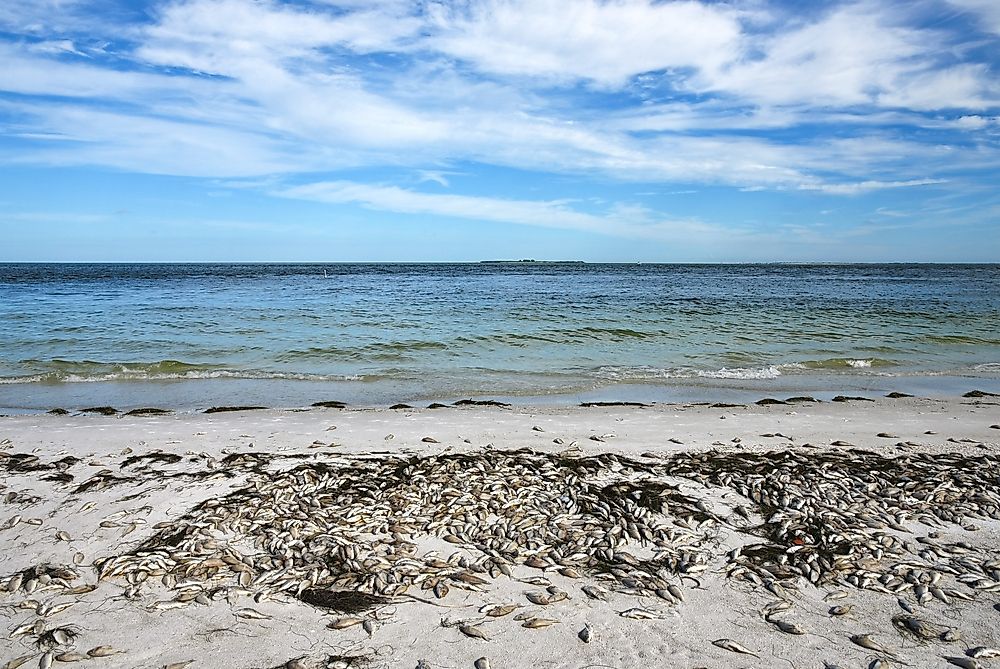What Is Red Tide?

Red tide refers to a common phenomenon in the world where there is a bloom in the concentration of algae due to dinoflagellates and other creatures. Some of the dinoflagellates and phytoplankton found in the red tide contain pigments of varying colors that enable photosynthesis. When the phenomenon of red tide happens, the water usually appears discolored or dirty. The color of the water then ranges from a rust brown, pink, or even blood red.
Concerning where it happens, species that cause red tide exist in bays, oceans, and in places where saltwater meets up with salty water. However, these species can only survive in salty water. Several factors including wind, salinity, and nutrients affect the rate of growth of these species.
Factors That May Contribute To Red Tide
While the exact reason for the occurrence of red tide is unknown, there are a number of theories that have been set forth by experts in the field. One of the theories is that the tide is caused by the waste that people dump into oceans and water bodies such as agricultural runoff and sewage. Another reason set forth is the season of the weather. Experts have been able to discern that the bloom is more pronounced in the summer when it is warmer than during the other seasons which are typically colder. However, it is important to note that recent changes in climatic patterns mean that blooms are also happening in the winter. Another theory is that there is an increase in dust that is rich in iron from the Sahara Desert. This dust is thought to provide the necessary nutrients for the species of the red tide to bloom. Others have theorized that some blooms happening in the Pacific Coast are due to large-scale climatic occurrences such as the destructive El Niño. In the Gulf of Mexico, red tides have been a common occurrence for a long time, but it is also unclear why it happens.
Effects of Red Tide on Wildlife
While these natural occurrences are not always toxic, there are those that produce devastating toxins to marine life. In the cases where they are harmful, it is typical to see dead fish washing up to the shore for a period that may be up to two weeks after the tide has passed.
Not all marine life is affected though. Some creatures such as clams, oysters, and mollusks are immune to the toxin to the point where they store it in their bodies. The problem to other creatures happens when the shellfish eat the organisms that cause the red tide and then end up getting eaten themselves by other creatures. Consequently, the deadly toxins end up being transferred to other organisms. Some of the toxins, such as saxitoxin, can cause paralysis or even death if ingested.
The cycle also affects human beings since they eat fish. By feeding on contaminated shellfish, human beings expose themselves to conditions relating to neural transmissions. Some of the toxins even have the ability to become aerosolized and get into the human body through breathing. People who inhale these aerosols usually develop breathing complications within one hour of exposure.
Florida Red Tide 2018
The Florida Red Tide, caused by Karenia brevis blooms in the eastern Gulf of Mexico, have been particularly bad over the Summer 2018 season. As of July 31st, 2018, 90 sea turtles, 250 manatees, a whale shark, thousands of fish including 10 goliath groupers, and hundreds sea birds such as double-breasted cormorants and brown pelicans have turned up severely sick or dead. The city of Sanibel, Florida has estimated the fish kill to be six dead fish for every foot of beach. The red tide has lasted for more than a year and a half and is considered the largest red tide disaster since 2006.











